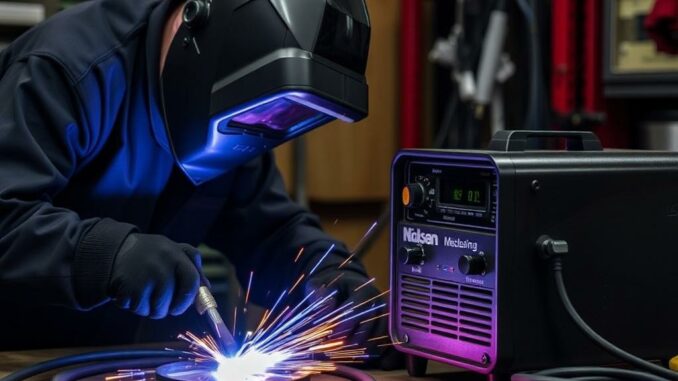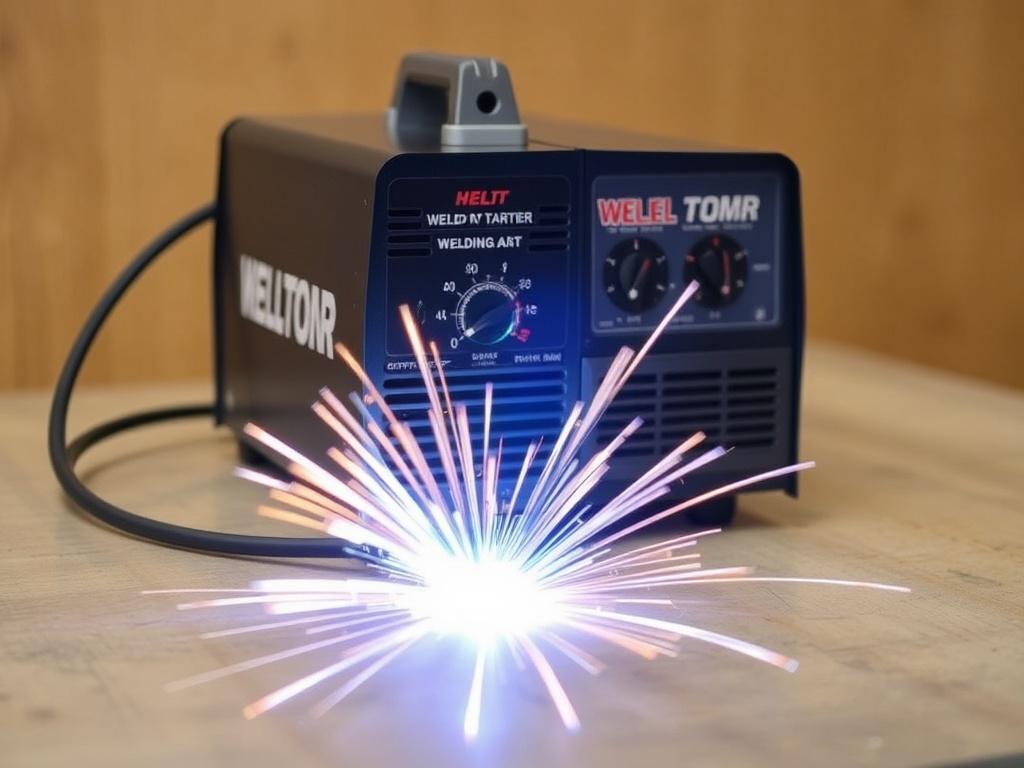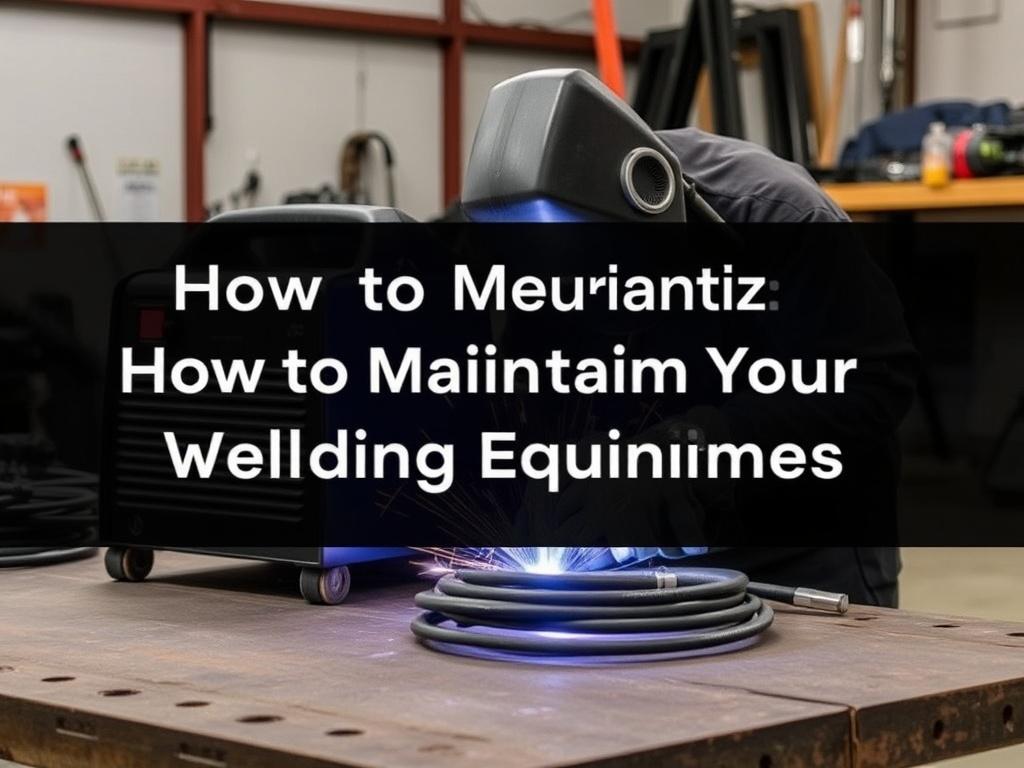
Welding is a skilled craft that requires precision, patience, and quality equipment. Whether you are a professional welder working in a bustling workshop or a hobbyist perfecting your craft in a home garage, your welding equipment is the cornerstone of your success. Maintaining welding equipment properly ensures not only safety but also the longevity and performance of your tools, saving you money and frustration in the long run.
In this comprehensive guide, we will explore everything you need to know about how to maintain your welding equipment for longevity. We will cover practical tips, routine maintenance tasks, common issues, and advice on storage and handling. If you want your welding gear to last and perform like new every time, keep reading!
Why Maintaining Your Welding Equipment Matters
Imagine you’re in the middle of a complicated welding project — a crucial weld that must be perfect. Suddenly, your machine sputters or the arc becomes unstable. This kind of problem is more than a nuisance; it can cause poor weld quality, safety hazards, and expensive downtime. Properly maintaining your welding equipment helps prevent these issues by ensuring that every component works efficiently and reliably.
Because welding equipment involves electrical components, consumables, and precision mechanics, neglect can lead to rapid deterioration and failure. Not only does maintenance directly improve the lifespan of your welding tools, but it also protects your investment. High-quality welding machines, torches, and accessories can cost hundreds or thousands of dollars. Taking simple upkeep steps will help you avoid premature replacements or costly repairs.
Additionally, a well-maintained welding setup improves workplace safety. Faulty cables, worn tips, or dirty connections can create dangerous sparks, overheating, or electrical hazards. By keeping your equipment clean and checked regularly, you protect yourself and your team.
Key Components of Welding Equipment
Before diving into maintenance tips, it’s helpful to understand the essential components of your welding equipment. Keeping these parts in optimal condition is what extends the lifespan of your tools:
- Welding Machine: This includes the power source (such as MIG, TIG, or arc welding machines). It supplies the electrical current needed for welding.
- Welding Cables and Leads: These carry current from the machine to the torch and the workpiece. They face wear and tear and must be inspected regularly.
- Welding Torch or Electrode Holder: The part you hold and manipulate during the weld. This tool experiences constant use and exposure to heat.
- Ground Clamp: This affixes the workpiece to the electrical circuit. It must have solid contact for proper welding.
- Consumables: Such as welding tips, nozzles, electrodes, and shielding gas cylinders.
- Personal Protective Equipment (PPE): Helmets, gloves, and protective clothing, which should also be maintained for safety and effectiveness.
Each of these components requires different approaches to maintenance, but all are vital to overall equipment longevity.
Routine Maintenance: The Daily and Weekly Checklist
Routine maintenance is the simplest, most effective way to keep your welding equipment running smoothly. Incorporating daily and weekly checks into your workflow can prevent small issues from becoming big problems.
Daily Maintenance
- Inspect Cables and Connections: Check for cracks, cuts, or exposed wires. Damaged cables should be repaired or replaced immediately to prevent shorts or shocks.
- Clean the Welding Torch: Remove any spatter or debris on the tip and nozzle. Using a wire brush or tip cleaner helps maintain a steady arc.
- Check Gas Flow and Regulators: Ensure that shielding gas cylinders are secured and regulators are functioning properly, avoiding leaks.
- Wipe Down the Machine: Dust and dirt can build up on vents or controls, so a quick wipe with a dry cloth helps keep the machine cool and responsive.
Weekly Maintenance
- Inspect the Ground Clamp: Make sure it grips tightly and that the cable connections are secure.
- Check Consumables Inventory: Running out of tips or electrodes mid-project is frustrating and can damage your torch. Replenish supplies as needed.
- Inspect and Clean Cooling Fans and Vents: Overheating reduces the lifespan of the welding machine. Remove dust to improve air circulation.
- Check All Electrical Connections: Ensure that plug-ins and terminals are tight and corrosion-free. Loose connections can cause voltage drops.
Deep Cleaning and Maintenance Practices
Aside from daily and routine checks, a thorough cleaning and servicing schedule is essential. Depending on how often you weld, setting aside time every few months for deep maintenance will keep your machines and accessories in top condition.
How to Clean a Welding Torch Thoroughly
The welding torch is one of your most used tools, so keeping it clean is crucial. Here’s a step-by-step method:
- Disconnect the Torch: Ensure the machine is off and unplugged before starting.
- Remove the Nozzle and Tip: Take off the consumable parts and immerse them in warm, soapy water to loosen spatter buildup.
- Use a Tip Cleaner: Gently scrape the contact tip to remove oxidation or deposits that hinder electrical flow.
- Clean the Nozzle: Use a wire brush to eliminate spatter and debris inside and outside the nozzle.
- Inspect the O-Rings and Insulators: Replace any worn or damaged parts to prevent gas leaks.
- Reassemble and Check Gas Flow: Reinstall the cleaned parts and confirm that gas flows smoothly without leaks.
Cleaning the Welding Machine Internals
If your welding machine has accessible interiors, open the casing (after unplugging!) and inspect the dust and debris inside. You can use compressed air or a soft brush to gently remove dirt from circuit boards, fans, and vents. Do NOT use liquids or sprays inside the machine, as this can cause electrical damage.
Preventing Wear and Tear: Storage and Usage Tips
How you use and store your welding equipment significantly impacts its lifespan. Some of the most avoidable damage results from poor handling and improper storage.
Storage Best Practices
- Keep Equipment Dry and Clean: Never store welding machines or accessories in damp or dusty environments. Moisture can cause rust or electrical shorts.
- Use Protective Covers: When not in use, cover your welding machine and torch to protect them from dust and accidental damage.
- Organize Consumables: Store welding tips, electrodes, and gases in a cool, dry place. Properly label all materials to avoid confusion or expired consumables.
- Store Gas Cylinders Safely: Secure cylinders in an upright position and away from heat sources. Proper storage prevents leaks and accidents.
Using Welding Equipment Correctly
Even the highest quality welding equipment can deteriorate quickly if misused. Follow these helpful tips every time you weld:
- Use Recommended Consumables: Substituting tips or electrodes can cause damage or poor welds.
- Maintain Correct Settings: Adjust voltage, current, and gas flow according to manufacturer guidelines to avoid undue stress on the machine and weld.
- Avoid Overheating: Give your welding machine breaks to cool down during heavy use. Overheating shortens motor and transformer life.
- Handle Equipment Gently: Avoid dropping or banging your torch, cables, or machine to prevent internal damage.
Troubleshooting Common Welding Equipment Issues
Even with the best maintenance, problems can arise. Recognizing early signs of trouble and troubleshooting effectively can save time and repair costs.
| Issue | Possible Cause | Troubleshooting Steps |
|---|---|---|
| Unstable Arc | Dirty tip, poor ground connection, low shielding gas flow | Clean or replace welding tip; inspect and tighten ground clamp; check gas cylinder pressure |
| No Power | Blown fuse, bad cable connection, faulty power source | Check and replace fuses; inspect cable connections; test machine with multimeter or consult technician |
| Overheating Machine | Blocked vents, excessive use without breaks | Clean air vents and fans; allow cooling periods during heavy workload |
| Spatter Buildup on Nozzle | Wrong voltage settings, dirty contact tip | Adjust voltage settings; clean contact tip regularly |
Choosing Quality Equipment and Consumables for Longevity

Maintenance starts with quality. Investing in quality welding machines, torches, cables, and consumables from reputable brands increases your chances of long-lasting equipment. Cheaper materials may degrade faster or cause additional strain, negating your maintenance efforts.
Tips for Selecting High-Quality Welding Gear
- Research Brand Reputation: Look for brands with strong warranties and positive user reviews.
- Match Equipment to Your Needs: Choose machines and consumables that fit the types of metals and projects you work on.
- Consider Warranty Options: Longer warranties often indicate manufacturer confidence in product durability.
- Purchase from Authorized Dealers: Avoid counterfeits or substandard accessories.
Summary: Maintain Welding Equipment for Longer Life and Better Performance

Maintaining your welding equipment for longevity is not just about preserving an investment—it ensures safety, quality, and reliability every time you light the arc. Simple daily checks, regular cleaning, careful handling, and proper storage can dramatically extend your tools’ lifespan. When combined with smart purchasing decisions and timely troubleshooting, these tips make your welding projects smoother and more successful.
Remember that welding equipment is more than just a machine; it’s a partner in your craft. Treat it well, and it will reward you with years of dependable service and strong, beautiful welds.
Additional Resources for Welders

To continue improving your welding expertise and equipment maintenance routine, consider exploring the following resources:
- Lincoln Electric Learning Center – Comprehensive videos and guides on welding techniques and equipment care.
- Miller Welding Education – Step-by-step tutorials and equipment maintenance tips.
- American Welding Society – Industry standards, safety advice, and training resources.
Keep welding safely and maintain your gear diligently. Happy welding!
